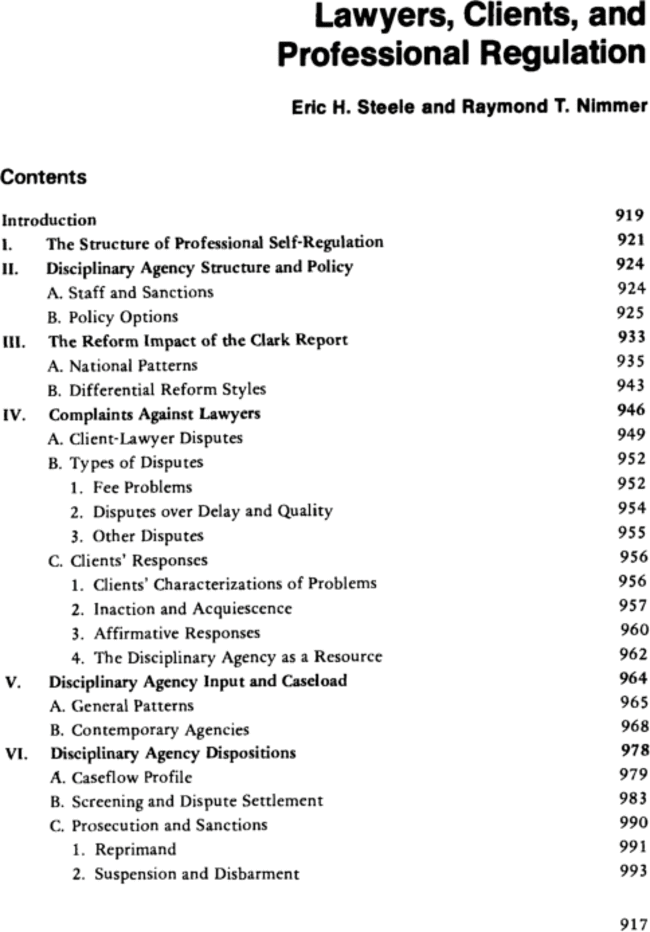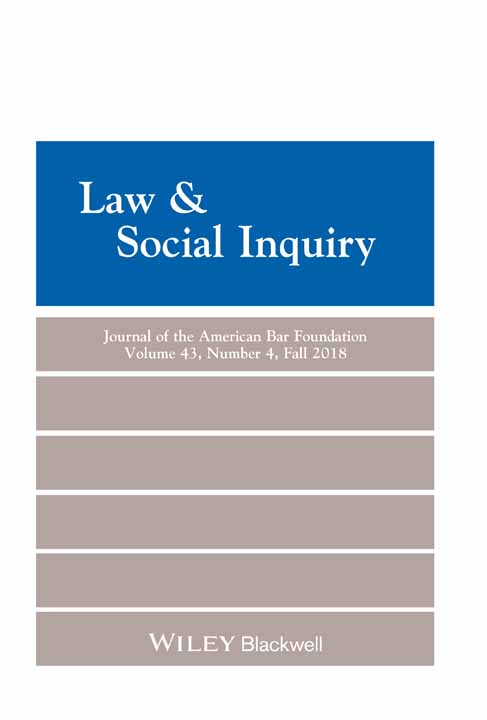Lawyers, Clients, and Professional Regulation
The authors were codirectors of the American Bar Foundation study of the legal profession's disciplinary practices. This is the first of two articles based on that study. The second article, exploring in greater depth the conceptual problems and implications of disciplinary agency practices, is forthcoming later this year as Nimmer & Steele, “Deviance and Dispute Resolution: The Legal Profession's Efforts at Self-Regulation.” The study was funded by the American Bar Endowment.
We wish to acknowledge the generous advice and helpful criticism of the ABF's Professional Standards Discipline Advisory Committee. The members of the Advisory Committee are:
Alex Elson, Chairman, of the Illinois Bar, Chicago
Francis A. Allen, Edson R. Sunderland Professor of Law, University of Michigan Law School, Ann Arbor
John G. Bonomi, Chief Counsel, Committee on Grievances of the Association of the Bar of The City of New York
F. LaMar Forshee, Director, American Bar Association Center for Professional Discipline, Chicago
William H. Hastie, Senior Judge, United States Court of Appeals for the Third Circuit, Philadelphia (deceased)
Harold A. Stevens, Presiding Justice, Supreme Court of New York, Appellate Division, First Department, New York City
Roger J. Traynor, Professor of Law, Hastings College of Law, San Francisco; Retired Chief Justice of California
Edward L. Wright, of the Arkansas Bar, Little Rock
We would like to express our appreciation for the cooperation of the Board of Governors and the Standing Committee on Professional Discipline of the American Bar Association in allowing us limited access to the ABA National Discipline Data Bank for the purposes of this study; see note 2 infra. In addition we are grateful to the Michigan State Bar Grievance Board for granting us access to their files for this study (see note 62 infra) and to Richard H. Senter, Michigan State Bar Grievance Administrator, for his helpful cooperation in carrying out our research. We wish to thank Felice J. Levine, Research Social Scientist, American Bar Foundation, for her helpful advice and support throughout this study and to acknowledge the valuable research assistance of Terry Gingle, Patricia Krauthaus, John Rotuno, and Richard Wolff.
The views expressed are solely our own.





